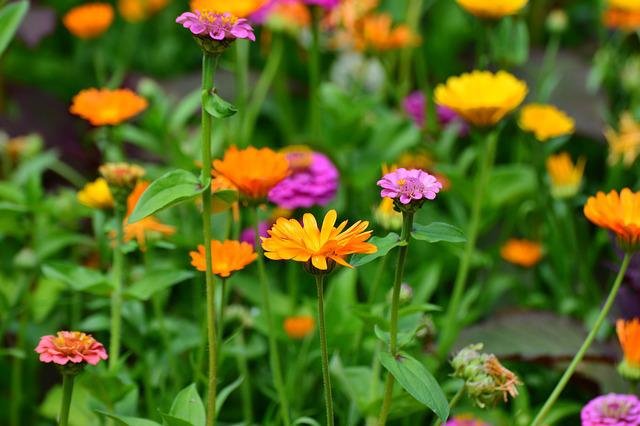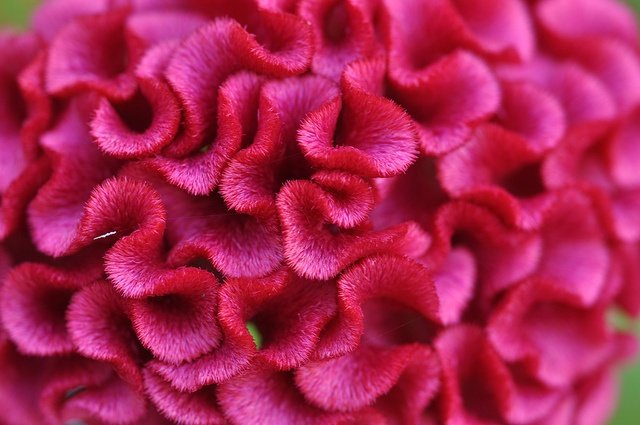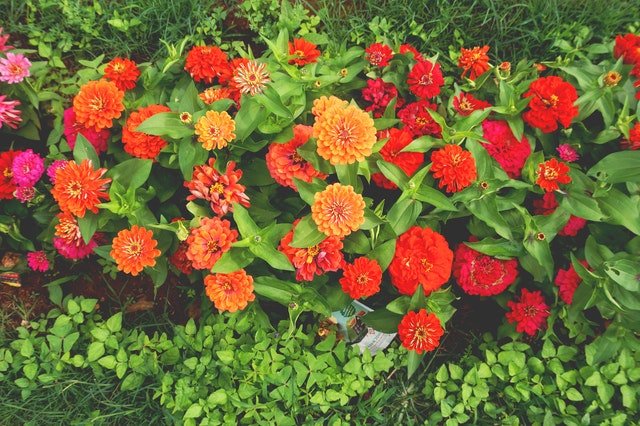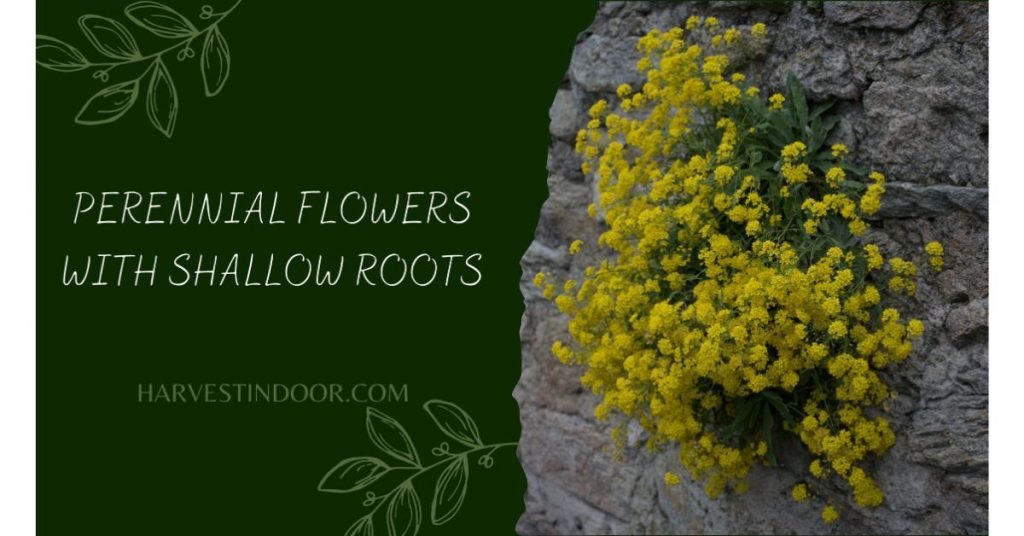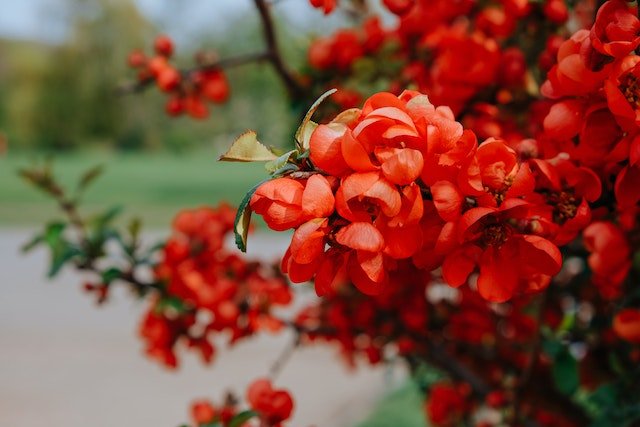When it comes to landscaping, one of the most delightful and eye-catching features you can incorporate is pom pom looking bushes. These unique shrubs add a touch of whimsy and playfulness to any outdoor space. With their rounded, fluffy blooms, they create a visual spectacle that is hard to ignore.

In this comprehensive guide, we will explore various types of pom pom looking bushes, their characteristics, and how you can incorporate them into your landscape design. So, let’s dive in and discover the enchanting world of pom pom looking bushes!
Table of Contents
What Are Pom Pom Looking Bushes?
Pom pom looking bushes, as the name suggests, are shrubs that resemble fluffy pom poms. They are characterized by their unique and distinctive rounded blooms, which give them a playful and whimsical appearance. These bushes add a touch of elegance and charm to any landscape, making them a popular choice among gardeners and landscape enthusiasts.
Pom pom looking bushes come in various species, each with its own characteristics and growing requirements. Let’s explore some of the popular types of pom pom looking bushes that you can consider for your landscape.
Popular Types of Pom Pom Looking Bushes
1. The Fluffy Ball Viburnum
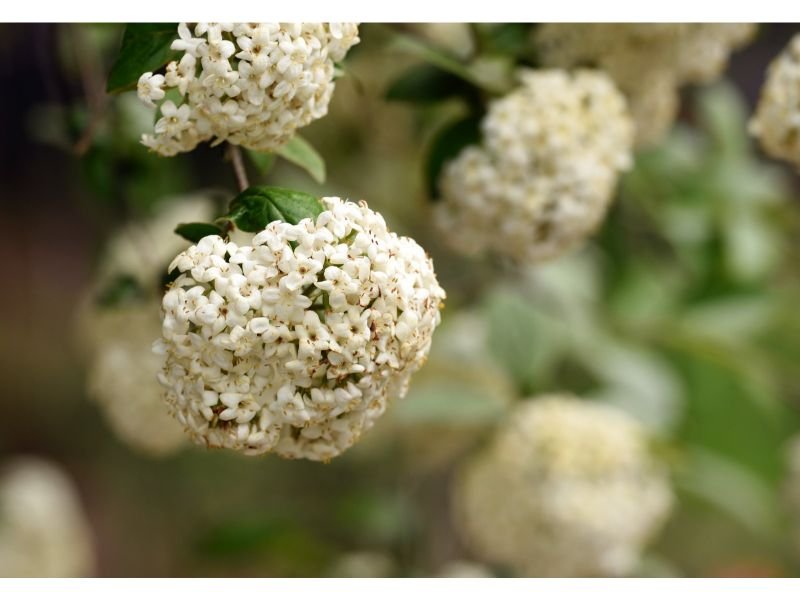
The Fluffy Ball Viburnum (Scientific Name: Viburnum opulus) is a stunning deciduous shrub known for its dense clusters of spherical, fluffy white flowers. These flowers resemble fluffy pom poms and create a visually captivating display. The Fluffy Ball Viburnum prefers well-drained soil and thrives in full sun to partial shade. It is a low-maintenance bush that adds a touch of elegance to any garden or landscape.
2. The Spiraea “Gold Mound”

For those seeking a burst of golden hues in their garden, the Spiraea “Gold Mound” is an ideal choice. This compact, deciduous shrub displays lovely golden foliage, creating a visual delight when its dainty pink flowers emerge, resembling tiny Pom Poms. It is a hardy plant that can thrive in various soil types.
3. The Pompom Hydrangea
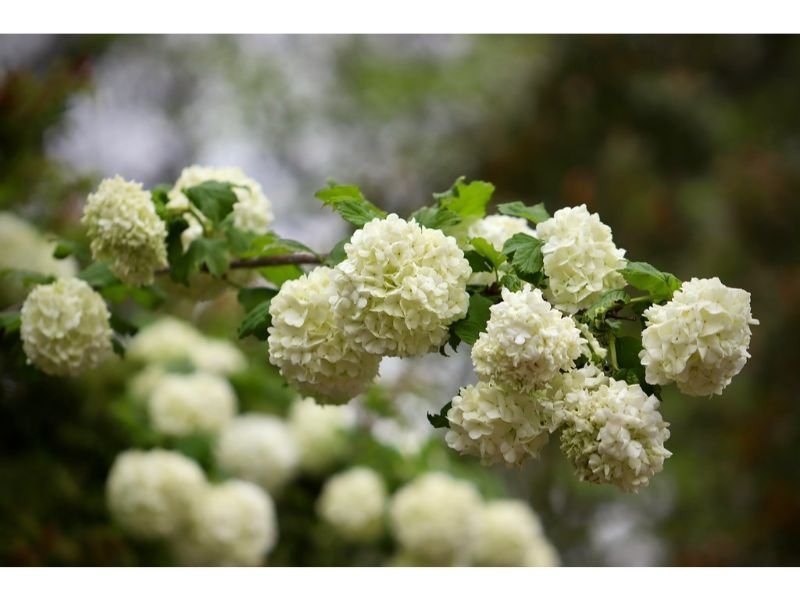
The Pompom Hydrangea (Scientific Name: Hydrangea macrophylla) is a breathtaking shrub renowned for its large, rounded flower heads that resemble fluffy pom poms. These flower heads can vary in color, ranging from pink and blue to white and lavender, depending on the soil pH. The Pompom Hydrangea prefers well-drained soil and partial shade. It is a showstopper in any garden or landscape and adds a touch of elegance and charm.
4. The Fluffy Globe Spirea
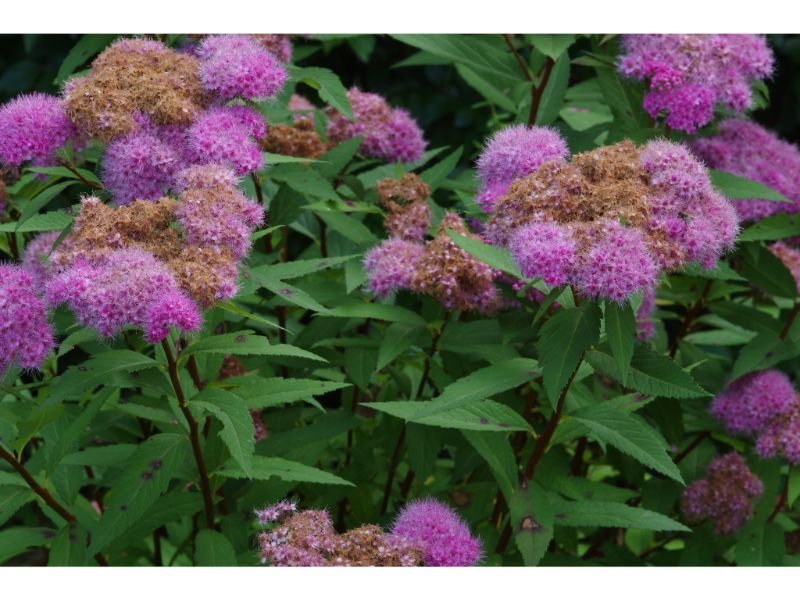
The Fluffy Globe Spirea (Scientific Name: Spiraea japonica ‘Fluffy Globe’) is a compact deciduous shrub known for its globe-shaped clusters of pink flowers. These clusters resemble fluffy pom poms and create a delightful focal point in the landscape. The Fluffy Globe Spirea thrives in well-drained soil and full sun to partial shade. It is a versatile shrub that can be used as a border plant, foundation planting, or in mass plantings.
5. The Pom Pom Shrub Rose
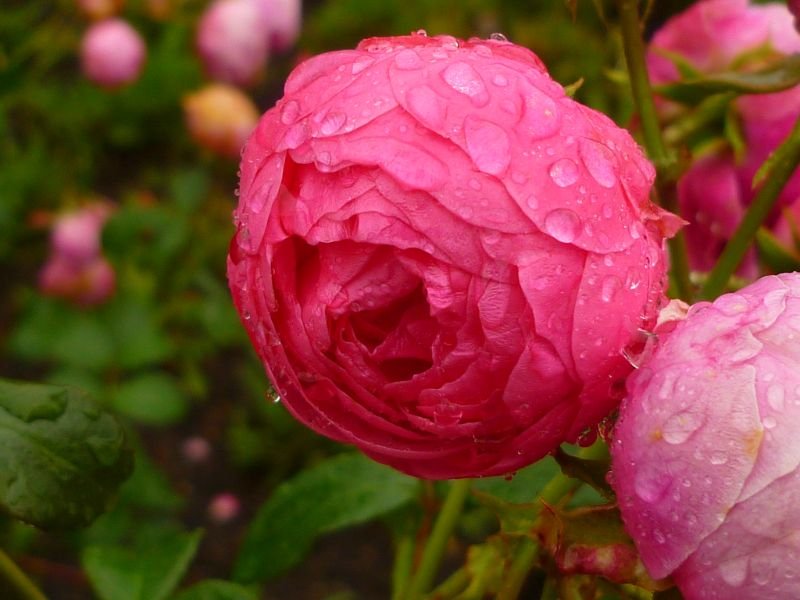
The Pom Pom Shrub Rose (Scientific Name: Rosa ‘Pomponella’) is a stunning rose variety that produces exquisite, fully double blooms resembling fluffy pom poms. These blooms come in a range of colors, including red, pink, yellow, and white, adding beauty and elegance to any garden. The Pom Pom Shrub Rose requires well-drained soil and full sun to thrive. It is a popular choice for adding a touch of romance and sophistication to landscape designs.
6. The Hydrangea Paniculata “Grandiflora”

The Hydrangea Paniculata “Grandiflora” is one of the most popular choices among Pom Pom looking bushes. Its large, cone-shaped flower heads boast an elegant combination of creamy white and soft pink hues. These bushes thrive in well-draining soil and prefer partial shade, making them an excellent choice for gardens with varying sunlight conditions.
7. The Viburnum Opulus “Roseum”

The Viburnum Opulus “Roseum,” commonly known as the Snowball Bush, is another enchanting member of the Pom Pom looking bushes family. This deciduous shrub features globular flower clusters that start as bright green and gradually turn into snowy-white pom poms. With its striking appearance, it’s perfect for creating eye-catching focal points in your garden.
These are just a few examples of the various types of pom pom looking bushes available. Each variety has its own unique characteristics, and selecting the right one depends on your personal preferences and the specific requirements of your landscape.
How to Incorporate Pom Pom Looking Bushes in Your Landscape
Now that we have explored some popular types of pom pom looking bushes, let’s discuss how you can incorporate them into your landscape design. The fluffy and playful nature of these bushes makes them versatile and suitable for various landscaping purposes. Here are some creative ideas:
Creating a Playful Pathway
One way to add charm to your landscape is by creating a playful pathway lined with pom pom looking bushes. Plant them along the sides of the pathway, alternating colors and varieties to create an eye-catching display. The rounded blooms will create a whimsical atmosphere and guide visitors along the path with a touch of flair.
Framing Your Garden
Use pom pom looking bushes as natural frames for your garden beds or other focal points. Plant them strategically at the corners or edges of your garden to create a visually appealing frame. The fluffy blooms will draw attention to the central elements of your garden, such as statues, water features, or seating areas.
Adding Flair to Borders
Pom pom looking bushes make excellent border plants. Use them to define the edges of your garden beds or pathways. Their rounded blooms will add softness and visual interest to the borders, enhancing the overall aesthetics of your landscape. Choose compact varieties that stay within the desired border dimensions.
Focal Point of a Flower Bed
Make a statement in your flower bed by incorporating a large pom pom looking bush as a focal point. Plant it in the center or slightly off-center of the bed, depending on the desired visual effect. The fluffy blooms will capture attention and create a stunning centerpiece amidst the other flowers and foliage.
Potted Pom Pom Plants
If you have limited space or prefer container gardening, pom pom looking bushes can thrive in pots and containers. Select dwarf varieties that are well-suited for container growth. Place them on your patio, balcony, or porch to add a touch of whimsy and color. Remember to choose containers with proper drainage to ensure the health of the plants.
These are just a few ideas to get you started but feel free to let your creativity shine when incorporating pom pom looking bushes into your landscape. Remember to consider the specific needs of each variety and ensure they are planted in appropriate conditions for optimal growth.
FAQs about Pom Pom Looking Bushes
What are the maintenance requirements for pom pom looking bushes?
Pom pom looking bushes are generally low-maintenance, but they do require some care. Regular pruning, usually in early spring, helps maintain their shape and encourages healthy growth. Additionally, providing adequate water and fertilization based on the specific needs of the variety will promote vibrant blooms.
Can pom pom looking bushes tolerate different soil types?
Pom pom looking bushes have varying soil preferences depending on the species. However, most prefer well-drained soil that is rich in organic matter. It’s important to research the specific requirements of the chosen variety to ensure the soil conditions are suitable.
Does pom pom looking bushes attract wildlife?
Yes, pom pom looking bushes can attract wildlife, especially pollinators like bees and butterflies. The vibrant blooms serve as a food source and attract these beneficial insects to your garden, promoting biodiversity and ecosystem health.
How do I propagate pom pom looking bushes?
Pom pom looking bushes can be propagated through various methods, including seed sowing, softwood or hardwood cuttings, and layering. Each method has its own requirements and success rates. It’s recommended to research the specific propagation techniques for the chosen variety or consult a local gardening expert.
Can pom pom looking bushes be grown in containers?
Yes, pom pom looking bushes can be successfully grown in containers. Select dwarf varieties that are well-suited for container gardening. Ensure the containers have proper drainage holes and use a well-draining potting mix. Regular watering and appropriate fertilization are crucial for the health and growth of potted pom pom looking bushes.
What are some companion plants for pom pom looking bushes?
When choosing companion plants for pom pom looking bushes, consider those that complement their colors, textures, and growth habits. Some suitable options include lavender, dwarf grasses, dwarf conifers, and perennial flowers such as asters or coreopsis. Remember to consider the light and soil requirements of both the pom pom looking bushes and companion plants for successful pairings.
These FAQs address common queries about pom pom looking bushes, providing valuable information to those interested in incorporating these delightful shrubs into their landscapes.
Conclusion
Incorporating pom pom looking bushes into your landscape design can add a touch of whimsy and flair. Their rounded, fluffy blooms create a captivating visual spectacle that enhances the overall aesthetics of any outdoor space. By selecting from the various types available and considering their growing requirements, you can create a landscape that exudes charm and elegance.
Whether you choose to line a pathway, frame a garden, or create a focal point, pom pom looking bushes are sure to bring joy and delight to your outdoor environment. With their low-maintenance nature and ability to attract wildlife, these bushes offer both aesthetic appeal and environmental benefits.
So, why not bring a touch of playfulness and enchantment to your landscape? Explore the diverse world of pom pom looking bushes, select the varieties that resonate with your vision, and watch as your outdoor space transforms into a whimsical haven.
Remember to stay attuned to the specific care requirements of each variety and enjoy the beauty and charm that pom pom looking bushes bring to your landscape. Happy gardening!

Gardening is my passion and growing plants indoors has always been a stress relief for me. Grow a banana tree in my apartment once (although failed to produce bananas).


